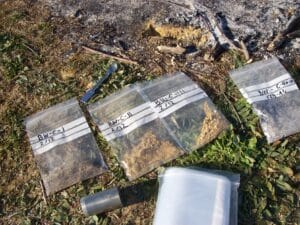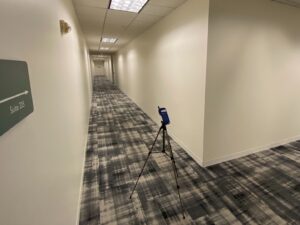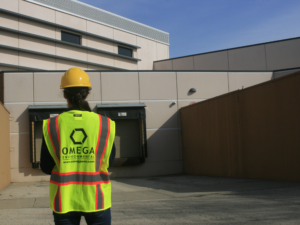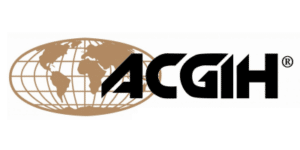Where There’s Wildfire, There’s Wildfire Smoke: Assessing for Wildfire Smoke Damage
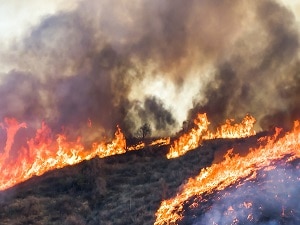
As California approaches the height of wildfire season this month, officials are bracing for an increasingly volatile situation as minimal rainfall has left much of the state dangerously dry.
A growing and overactive fire season is a direct result of climate change, the California Department of Forestry and Fire Protection reports. Almost half of the state’s largest and most damaging wildfires occurred in 2020 and 2021. California residents and business owners need to be well prepared to make communities more resilient to the impacts of wildfires, the agency says in a press release.
This year, CAL FIRE statistics show that the agency and the U.S. Forest Service have responded to more than 4,000 wildfires on state and federal land as of July.
“It’s very important to undertake a thorough wildfire smoke assessment to mitigate the potential for even greater damage to property or health and safety risks that can occur long after the flames have been extinguished.”
–Omega President and Project Director Steve Rosas
California wildfire season runs through October with the height of the fire season in July, August, and September. The impact on properties throughout the state can last far longer – even for buildings untouched by the flames.
The Long Reach of Wildfire Smoke
Wildfire smoke can reach thousands of feet into the atmosphere and be carried by wind currents far beyond the footprint of a wildfire, depositing ash, soot, and char onto surfaces hundreds of miles away. This can potentially cause property damage and threaten human health.
To minimize the intake of smoke, soot, and ash from outside air when wildfires are burning, it’s best to close all windows and put the HVAC system on 100% recycle mode, says Richard Wade, Ph.D., and principal scientist who works with Omega Environmental Services.
Wildfire Smoke Damage Assessment
After a wildfire, properties in the path of the smoke may need to be assessed for smoke damage, which can impact both building exteriors and interiors.
A properly conducted wildfire smoke assessment can determine what level of remediation or replacement is needed to restore the property and protect the health of occupants.
Omega Environmental Services has a highly trained team of scientists, toxicologists, certified industrial hygienists and other experts in wildfire smoke assessment for property owners, managers and insurance companies.
Laguna Niguel Wildfire Smoke Assessment
Our work following the Laguna Niguel fire in May helped determine the level of smoke damage for select homes. A total of 52 homes were impacted by the fire, which left 20 homes destroyed.
Omega team members conducted sampling of residual smoke on surfaces and independent laboratory testing was performed to determine the level of combustion byproducts in soot, ash, and char, including tests for corrosivity, for semi-volatile organic compounds and for asbestos, among other potential hazards spread by wildfire smoke.
“As a preferred consultant for insurance companies in wildfire zones across the western United States, we have been kept very busy in recent months testing for a wide range of smoke-related impacts, including indoor air quality,” said Omega President and Project Director Steve Rosas. “It’s very important to undertake a thorough wildfire smoke assessment to mitigate the potential for even greater damage to property or health and safety risks that can occur long after the flames have been extinguished.”
Smoke damage from wildfires can be determined using samples of residual smoke dust that has been deposited on surfaces in and around buildings. Omega also tests for content in the ash such as asbestos or hazardous metal particulates which can be aerosolized and deposited in buildings during a wildfire event.
Assessing the Damage Smoke Leaves Behind
The only way to determine the full extent of contamination from wildfire smoke is to visually inspect and collect samples of smoke residue from multiple surfaces from both the interior and exterior of buildings. Bulk sampling, tape-lift sampling and micro-vac are some of the methods used by professional industrial hygienists. In addition, the interior of HVAC systems is inspected and tested for smoke residue as well.
To assess if the fire residue is corrosive, the pH level in the particulate matter is tested. Corrosive fire residue can cause damage to a building’s contents and structures.
An Environmental Partner for Accurate Assessment of Wildfire Smoke Damage
At Omega Environmental, we have decades of experience partnering with insurance companies, property managers, construction and engineering firms and state, local and federal environmental officials to ensure safety and compliance. We provide environmental assessments, remediation, decontamination and expertise in the safe removal and management of environmental hazards in a wide variety of commercial and government settings, including assessment and remediation of wildfire and wildfire smoke damage. Our work for insurance companies, law firms, universities, construction companies, hospitals, and government agencies is reliable and effective for regulatory compliance.
To learn more about the threat that wildfire smoke poses to human health and property, download our whitepaper, Where There’s Smoke: Assessing the Health and Property Damage Risks of Wildfire Smoke.
The whitepaper is drawn from the reporting, research and wildfire studies conducted by principal scientist Dr. Richard Wade, a longtime researcher in academic and government regulatory roles, as well as the former Deputy Chief for Occupational Health at the California Occupational Safety and Health Administration (Cal/OSHA).





